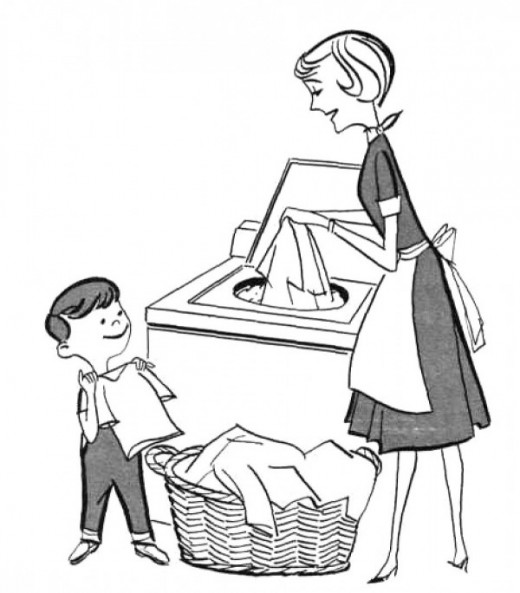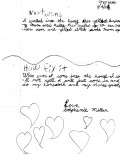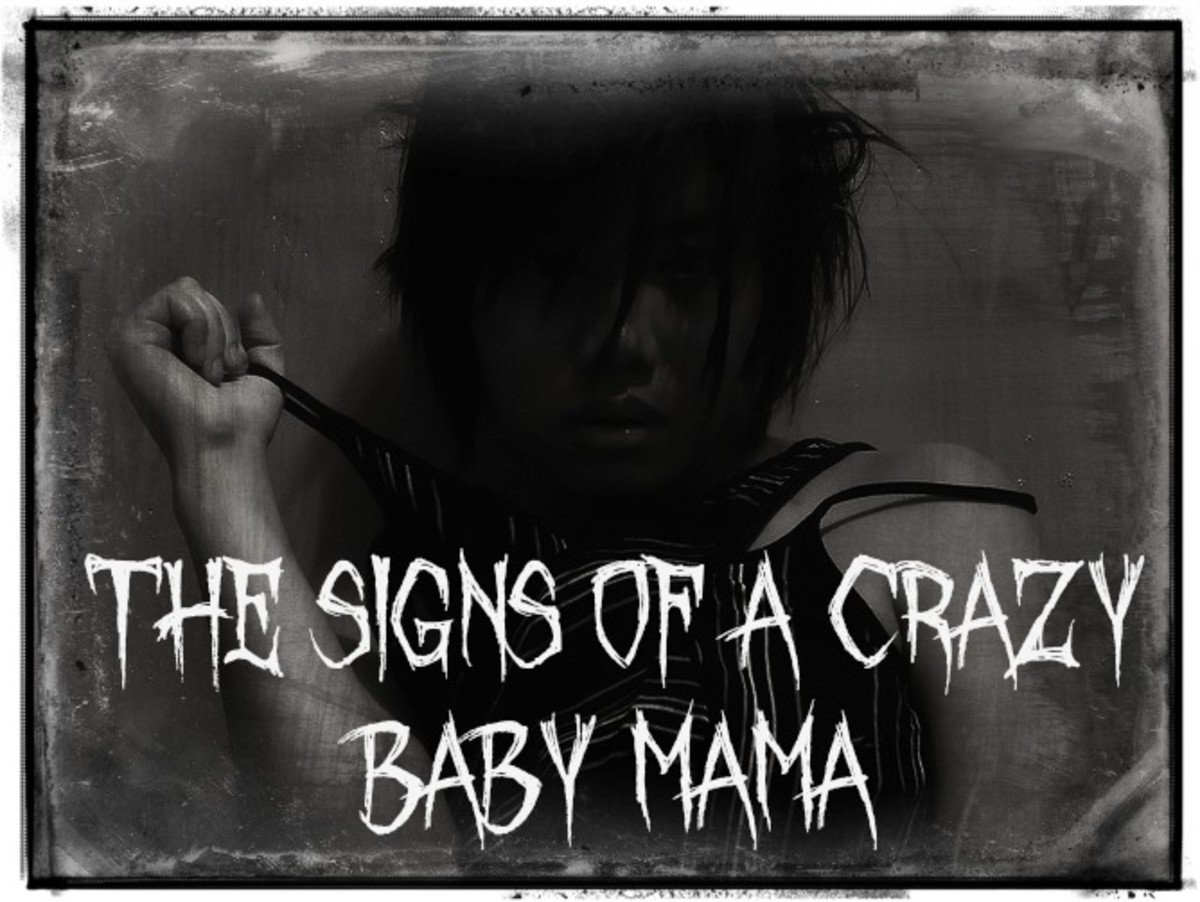Tips for Parenting Young Children
I’m raising my third child. I’ve reached the point in my parenting life where I know what’s really important and what I don’t need to worry about. I’ve mellowed. It’s a nice place to be. There is less worry. Something else that I’ve realized comes at this stage is a comfort level with parenting techniques to talk to and discipline children. A lot of these things I just do without really giving it a second thought, until now. Parenting didn’t always come easy and I got a lot of great advice over the years, so now it’s time to give back and share what I’ve learned.
Rules
Set rules and consequences. Some rules will be standard, all day, everyday rules. If it helps, you can even write them down and hang them on a wall. Other rules will be things you make up on the fly as the situation warrants. Either way, define the rule to the child and set a reasonable and related consequence, then stick to it.
Favorite Rules and Phrases:
Sharing sometimes means – You need to wait your turn.
You get what you get and you don’t get upset.
Food and drinks stay at the table and hands must be washed before you go play. (Guess what? My hand me down toys are NEVER black with gunk and dirt.)
Stickers go on clothing and hands, never furniture or walls - even the furniture I don't care about. (Guess what? Stickers never end up on the furniture I do care about.)

Determining Consequences
Time Out. The tried and true consequence is time out. The general rule of thumb is one minute for every year of their life. So a two year old will get timeout for two minutes. When their time is up, they need to be calm. Otherwise tell them that they need to sit longer until they calm down. Once they are calm, you can talk to them. Ask them why they were put in time out. If they can’t explain or they don’t answer correctly, then explain again what they did wrong and why that’s not ok. For example, “You were put in timeout because you hit Johnny. It’s ok to feel angry but it’s not ok to hit when we are angry. Hitting hurts.” Then make them apologize to you and to ever they harmed in their wrong doing. Give hugs all around. Then set them free.
Situational Consequences. While timeout is a good consequence that works. If you can, set a consequence that is related to the crime. For example, if the child spilled water all over the kitchen floor. Give them a towel and tell them to clean up their mess.
Attention Hog
What type of piglet is your child?
Pay Attention to Me
Acting out for attention. Does you child ask for something and get louder and louder until you answer them? Do they suddenly need something every time you get on the phone? Maybe climb on you or get in your face? They are trying to monopolize your attention. Don’t reward this behavior in an effort to get them to leave you alone. Address it straight on. Teach your child that holding up one finger means that you heard them and they need to wait their turn. Then use it and make them wait. This tactic might require a few rounds of time out until they understand that they will not get what they want by being obnoxious. Also keep in mind that when you are first teaching this lesson, only make them wait a minute or less. Gradually increase the wait time as they get better at waiting their turn. It is possible to have a full one hour phone conversation, uninterrupted, while a three year old is in the next room.
Mom Look! Mom or Dad Look! is another mantra of the attention hog. You do not have to look every single time they cry out. In fact, you are doing them a disservice if you do. A child who thinks that they deserve all the attention, all them time will grow into a adults who believe that. Adults who are seeking attention often choose more and more dangerous and damaging behavior to get this attention. Determine times when they get your undivided attention and appreciation and other time that they are told no, go occupy yourself, I’m busy.

Household Participation
Chores. A child is never too young to start chores, but they can most certainly be too old. My rule of thumb, they need to start chores before the age of five and preferably, as soon as they can walk. And I never call them chores. That seems optional. Participating in the household in which you live is mandatory. This participation should, of course, be age appropriate. For example, a child who can walk can take their dirty clothing to the laundry basket. They can help you put away their toys. As they get a little older, they can take their dirty dishes from the table to the sink or dish washer. You can hand them wet clothing and they can put it in the dryer. These are the earliest steps of teaching a child to clean up after themselves, participate in a meaningful way in their household, and be respectful to others. I also do not reward these behaviors. They are required not extra. Start them when your child is eager to imitate you and help you and you’ll spend far less time fighting them when they are old enough to not want to.
Talk Until You are Blue in the Face
Talk, talk and talk some more. They really will remember more than you think. Talk about life, religion, politics, books, school and more. This is how they will learn to talk to others as adults. This is how they learn to think and reason and solve problems. However there are few specific types of conversations and techniques that we should go over.
Don’t Repeat yourself. Don’t tell a child to do or not do something more than three times without a consequence. When you speak, they respond.
Talk about feelings. Tell your child you love them, daily. When talking about behavior also talk about feelings. Explain to them that it is ok to feel a feeling and also talk about the types of behavior that is ok or not ok when you feel those feelings. For example, “It’s ok to be mad that Mommy told you it’s time to leave. It’s not ok to stomp your feet and yell. Next time, you need to tell me how you feel and talk about it.”
Talking Face to Face. Whenever you have something important to say to a child, get down on their level, look them in the eye, make them look at you, and talk. This holds true for saying “I love you” and for discipline. Looking them in the eye does several things. First of all, it teaches them good communications skills for when they are an adult. Secondly, by getting down to their level rather than making them look up at you, it tells them that you respect them as a person. Making them look way up at you is a domination technique that might instill fear but it won’t instill respect. Finally, by using Face to Face communication for the important stuff, it’s a clue to them to pay attention because whatever you are about to say is really important.
Explain the Plan. Often child are more calm and well adjusted when they understand the world around them. Giving a warning before something they may not like happens. Explain what they can expect to occur during an outing, or when they get home. Consider how frustrating it is when you are planning to get home from work, kick off your shoes and veg on the couch for the evening, but as soon as you walk in the door, your spouse turns you around and marches you back out for an evening of dinner with her boss? Had you been told about the event and expected to spend your evening out, you would be much less put out. Children are no different. If a child is expecting to play with their friend for the next several hours and you suddenly drag them out the door, it’s upsetting.
Back Talk vs. Discussion vs. Begging. Do not allow back talk. If you tell a child to do something, do not allow them to say “No.” That response deserves a consequence. However, back talk is not the same thing as discussion. If you tell a child no and they politely ask why, explain why. Sometimes this will lead to the child offering an alternative solution that you can both be happy with. For example, one night I asked my mom if she would drive me and my friends to the mall. She said no. I asked why. Her response was that she was tired and didn’t feel like going out. I asked if I could go to the mall if my friend’s parents would drive. She said yes. Alternately, when a well reasoned discussion devolves into whining and begging, this also requires you to put a stop to it. Back Talk and Begging are annoying. Discussion develops a child into an adult capable of reasoning and problem solving.
One Question One Answer. Related to the idea of Begging is when a child asks a question, you give them an answer and then they ask again and again and again until you give them a different answer. If they ask a second time, tell them you gave them an answer and that asking again will get them a timeout, not a better answer. If they ask a third time, put them in time out.






